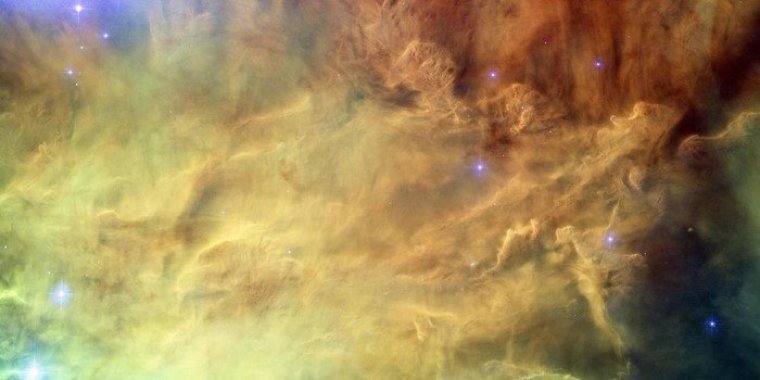| News / Science News |
Did Earth form inside a solar nebula?
Helium-3, a rare isotope of helium gas, is leaking out of Earth's core, according to a new study. Because almost all helium-3 is from the Big Bang, the gas leak adds evidence that Earth formed inside a solar nebula, a question that has long been debated.

The amount of helium-3 leaking from Earth's core suggests it formed inside a solar nebula. Photo: NASA, ESA
Helium-3 has been measured at Earth's surface in relatively small quantities. Scientists did not know how much was leaking from Earth's core or from its middle layers, called the mantle.
The new study pins down the core as a major source of helium-3. Some natural processes, such as the radioactive decay of tritium, can generate helium-3, but helium-3 is made primarily in solar nebulae -- massive, spinning clouds of gas and dust such as the one that gave rise to our solar system.
Because helium is one of the earliest elements produced in the universe, most helium-3 can be traced back to the Big Bang.
As a planet grows, it accumulates material from its surroundings, so its composition reflects the environment in which it formed.
To get high concentrations of helium-3 deep in the core, Earth would have had to form inside a thriving solar nebula, not on its fringes or during its waning phase.
The research offers new answers to mysteries surrounding Earth's formation.
About 2,000 grams of helium-3 leak out of Earth every year, "about enough to fill a balloon the size of your desk," said lead study author Peter Olson, a geophysicist at the University of New Mexico. "It's a wonder of nature, and a clue for the history of the Earth, that there's still a significant amount of this isotope in the interior."
The researchers modeled helium during two key stages of Earth's history: early formation, when the planet was accumulating helium, and following the formation of the moon, after which helium was lost.
Evidence suggests that an object one-third the size of Earth hit the planet early in its history, around 4 billion years ago. That impact would have remelted Earth's crust, allowing much of the helium to escape. The gas continues escaping to this day.
Using the modern helium-3 leak rate along with models of helium isotope behavior, the researchers estimated there are between 10 teragrams (1013 grams) to a petagram (1015 grams) of helium-3 in the core -- a vast quantity that Olson said points to Earth's formation inside a solar nebula, where high concentrations of the gas would have allowed it to build up deep in the planet. (National Science Foundation)





